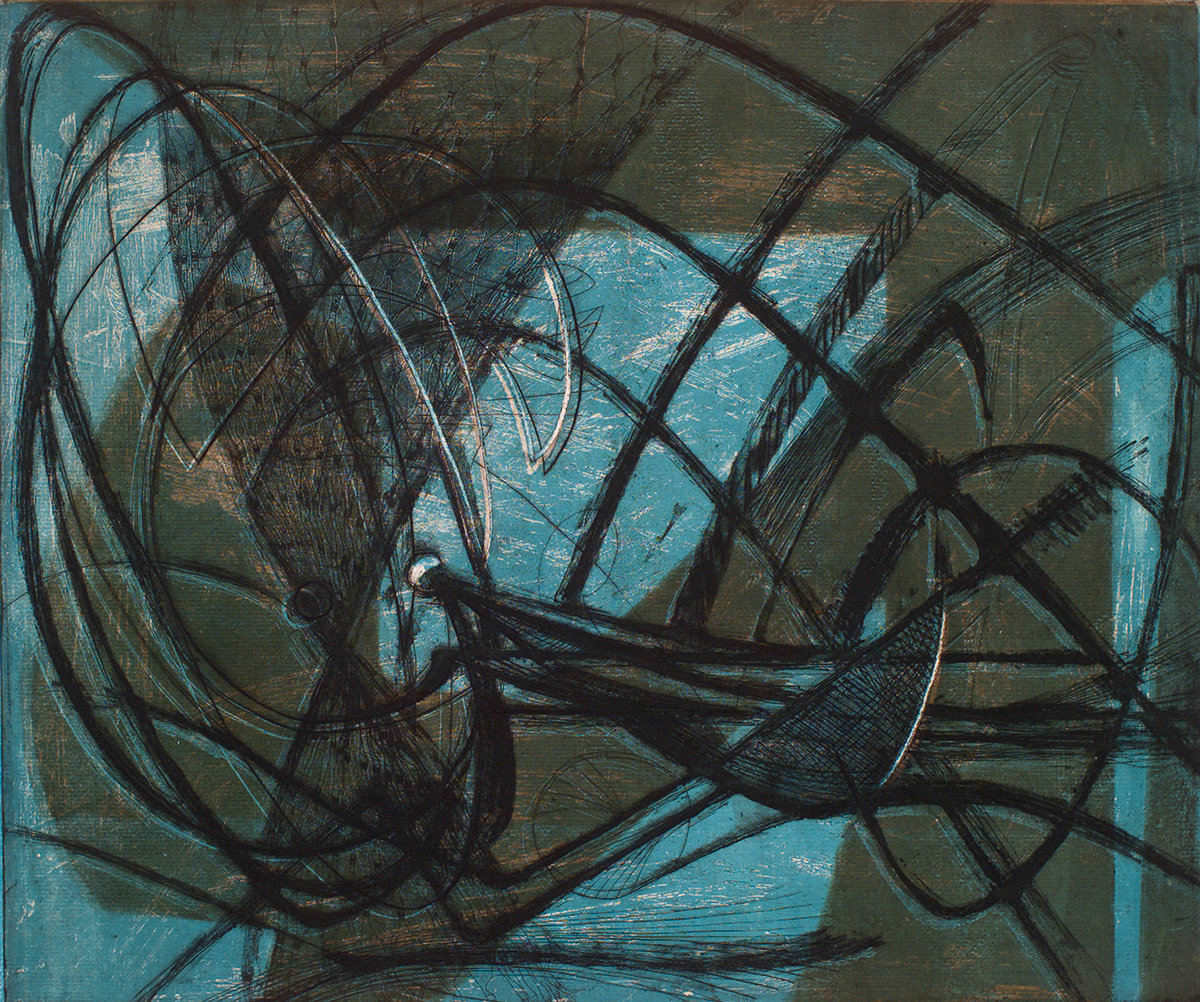New Acquisitions: Minna Citron after Atelier 17
September 5 - December 10, 2017
Minna Citron began her professional career as a member of the Fourteenth Street School, a loose confederation of artists—among them Reginald Marsh, Isabel Bishop, Raphael Soyer, and Kenneth Hayes Miller—whose paintings and prints regularly depicted the daily activities they observed in and around Union Square, in lower midtown Manhattan. In the mid-1940s, though, after nearly fifteen years of successfully representing urban America, she shifted decidedly toward abstraction. The impetus was Atelier 17, Stanley William Hayter’s experimental printmaking workshop, originally located in Paris but transplanted to New York at the start of World War II. While working at the studio, Citron experienced the full force of European modernism. She became particularly interested in automatism, a technique Hayter adopted from the Surrealists, which she began to employ in her work in order to allow the unconscious to play a greater role in its realization. By the time Hayter returned to Paris to reopen his studio there, in 1950, Citron’s efforts, by her own account, had begun to fall firmly within the realm of Abstract Expressionism.
This exhibition presented Citron’s printmaking from the four decades that followed the completion of her studies with Hayter. The sixteen intaglios, selected from two groups of prints gifted to the Palmer Museum of Art by Christiane Citron, the artist’s granddaughter, demonstrated how she continued to probe the expressive possibilities of abstract line and form, an approach that was central to the Atelier 17 aesthetic, for the remainder of her career.
Organized by the Palmer Museum of Art.
